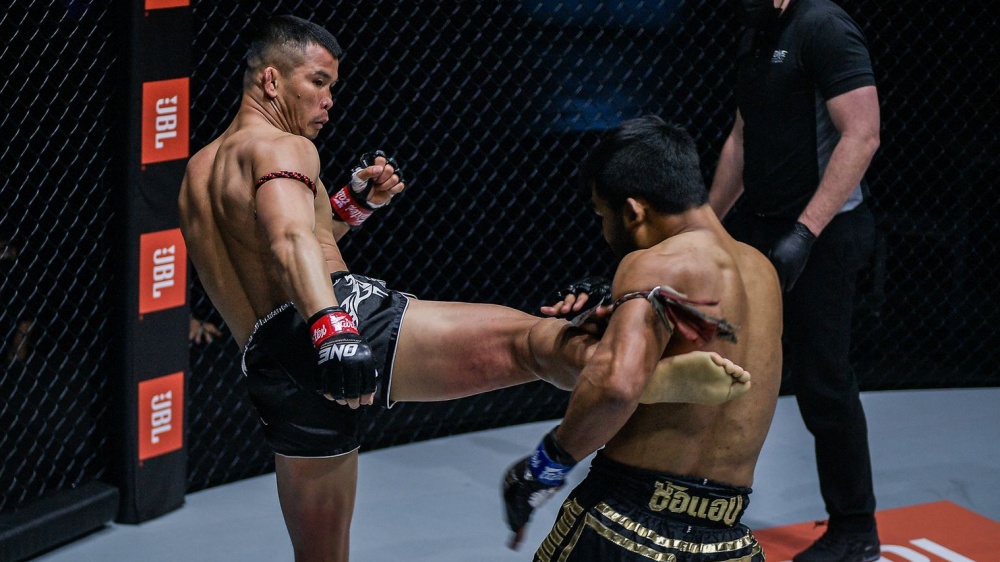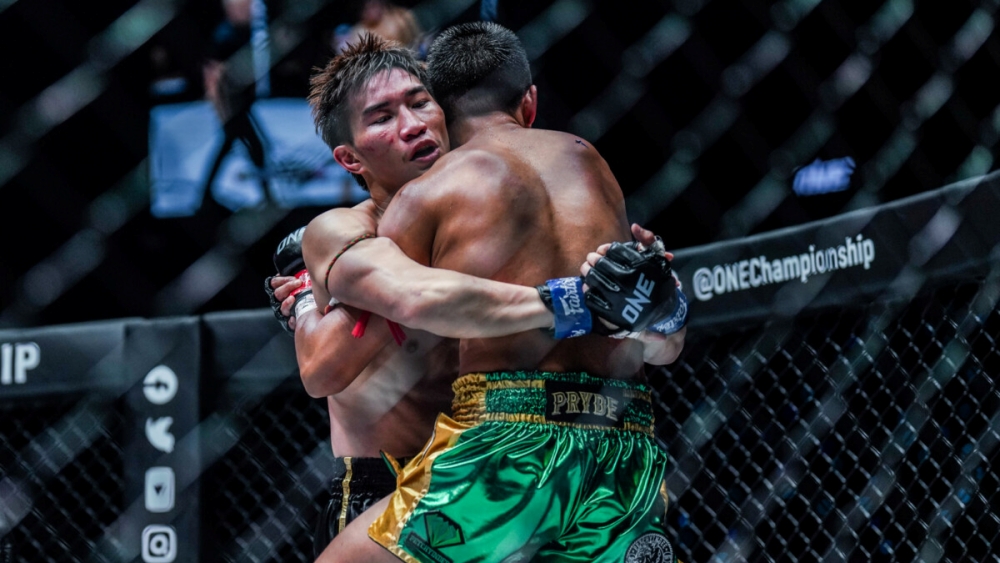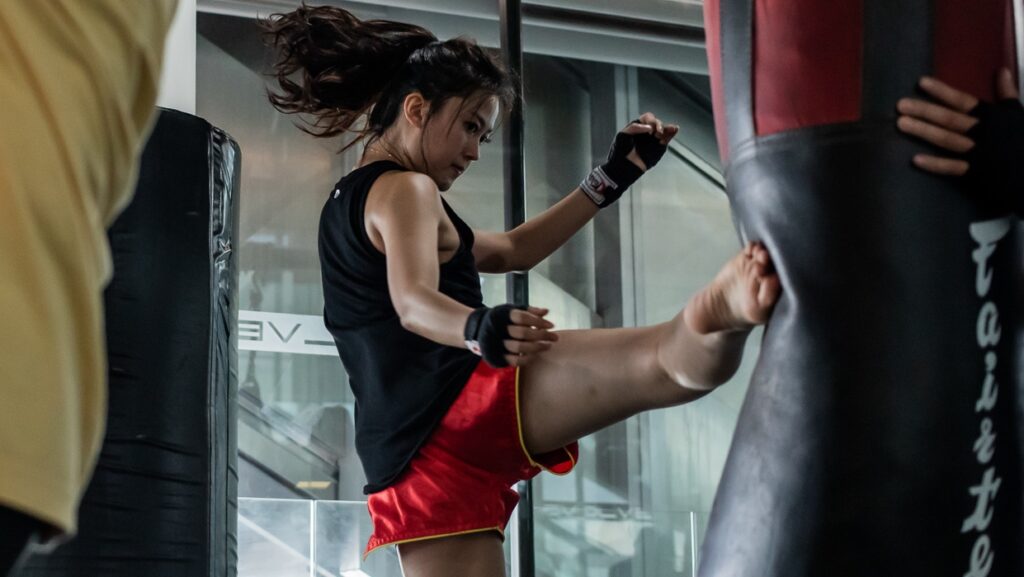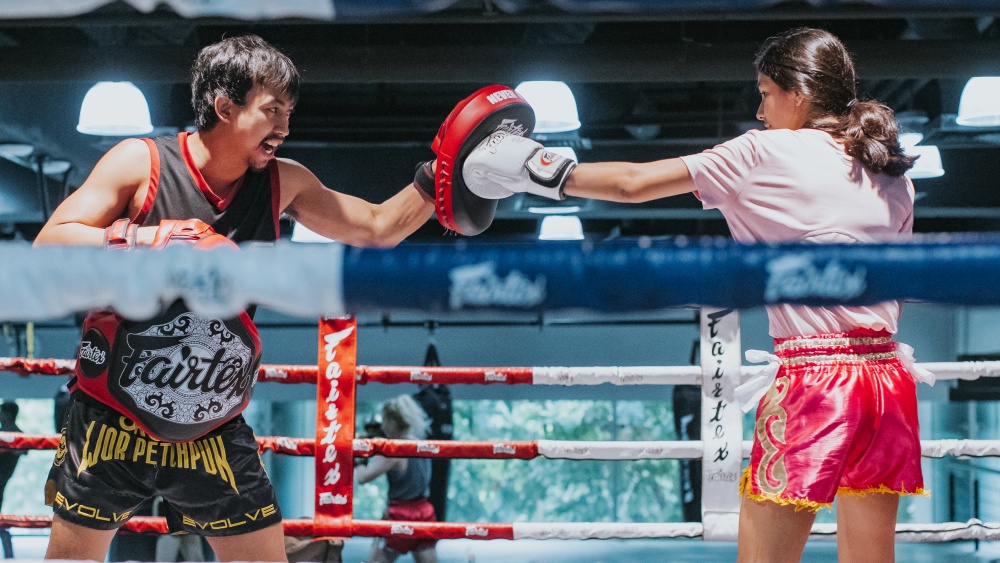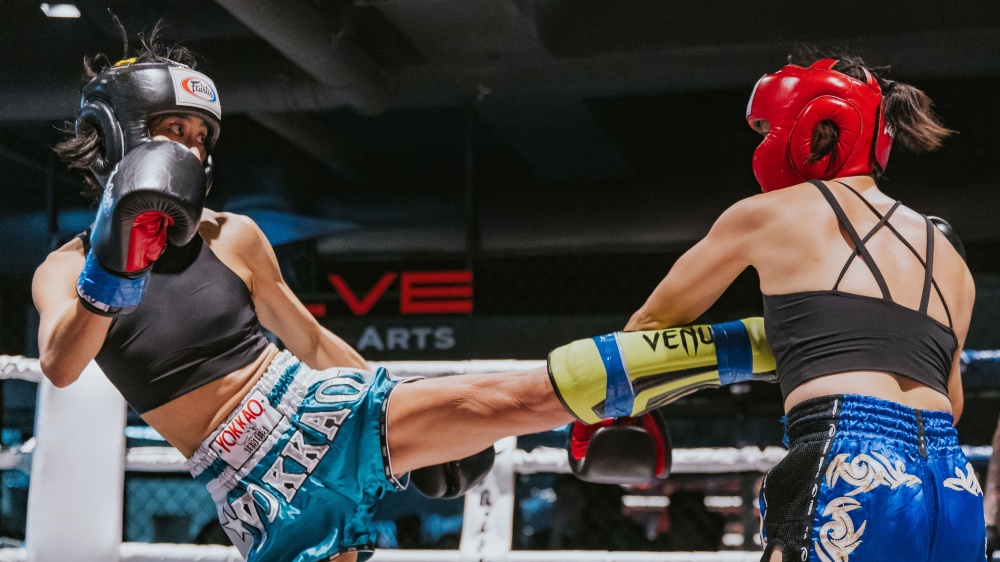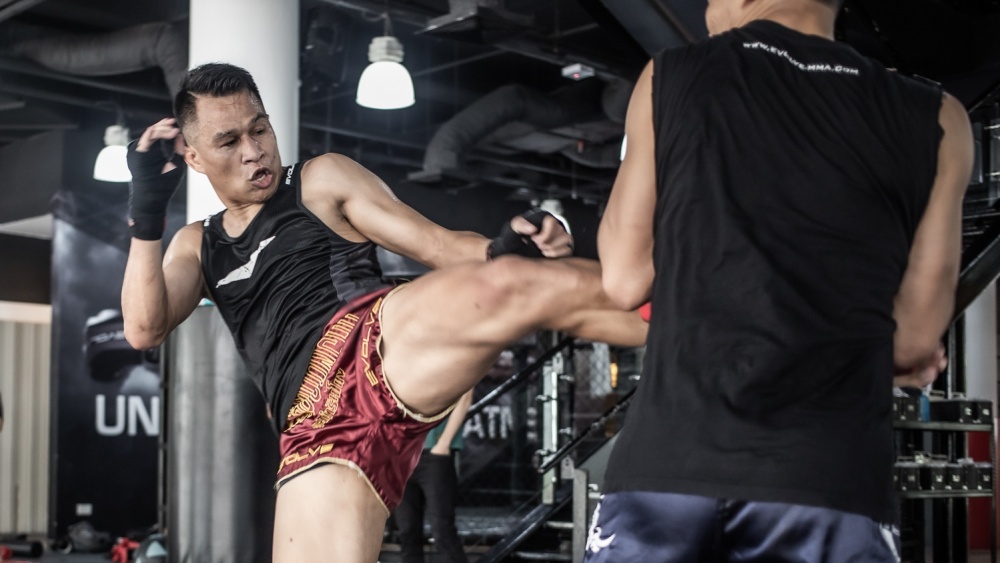When you begin learning the sport of Muay Thai, you often start with the basic strikes, utilizing your hands, elbows, knees, and kicks. These are fun and exciting to learn and execute. While sometimes the defensive side of Muay Thai might seem like a little less fun as you are first diving into the sport, it is clearly an incredibly important and vital part of any Muay Thai athlete’s game. Defense is just as important, if not even more important, than offense, making it one aspect that needs a lot of your attention.
A solid Muay Thai game built around both offense and defense will yield you the most success in the ring as you aim to dominate your opponent. Plus, a good defense will help open up offensive opportunities for you as well, giving you a chance to land the strikes you want in return.
Here are 10 essential Muay Thai defense techniques that every Muay Thai athlete needs to master:
1) Teep
The teep, also known as a push kick, is a highly utilized lower body defensive technique in Muay Thai. It’s quite a unique defensive technique, as it can be used as both a powerful defensive and offensive move simultaneously. The teep offers the benefit of being great for keeping or maintaining range too, making it a preferred technique for defending and maintaining distance. Here’s how to execute a basic, rear leg teep:
- Using your rear leg, bring your knee up towards your chest.
- Thrust your leg forward towards your opponent, utilizing your weight as you push and extend your leg out.
- Pull your leg back towards yourself immediately upon landing the teep.
There are many variations of the teep, including using both the lead and rear legs alongside various footwork patterns. Some benefits of using the teep defensively:
- Teeps defend and maintain a longer range.
- Teeps are powerful and usually stop an opponent’s forward movement.
- Teeps throw your opponent off-balance and can even become an offensive move if it knocks your opponent down.
- Teeps can become great setups for follow-up strikes.
2) Check
A check is another lower body defensive move. It is great for stopping low kicks, but if you haven’t perfected your checking technique or worked to condition your shins, one can be physically difficult for newer students.
Shinguards are a great way for newer students to begin practicing this vital defensive move while protecting their shins through the process. Here’s how to execute a check when a low kick is coming toward you:
- Bring your leg up to meet the oncoming kick while shifting your weight to your back leg.
- Bring your elbow out towards your raised leg to help give extra protection in case the kick goes higher than expected.
- Work to find the right angle to meet the oncoming kick with your shin so that the opponent does not kick through your check and end up sweeping you.
3) Parry
A parry is an easy defensive move that is commonly used in Muay Thai to manage jabs and crosses. It’s a simple and effective defensive technique that allows you to block a punch. When coupled with good footwork and head movement, it also allows you to find an angle on your opponent and return with your own strikes. Here’s how to execute a basic parry:
- When a jab or a cross is coming straight at you, utilize your same side arm (if they are throwing their right hand, use your left hand).
- Start the parry by moving your hand from the outside of their strike and “pushing” their punch across their (and your) body.
- Make sure to make the smallest parry possible to avoid overreacting and leaving your face exposed.
- While parrying, move your head to the outside. Take a half step to the outside too, to cut the angle on your opponent.
The parry often lends towards follow-ups as you block and move around your opponent.
4) Bob And Weave
This defensive move is a great one for finding a solid angle on your opponent while boxing on the inside range. It is a move typically used to defend against a hook, and it generally helps you to move closer to your opponent, too, making it lend well towards knee and elbow follow-ups. Here’s how to execute a bob and weave defensive move:
- As your opponent throws a hook towards you, “roll” your body under the strike.
- As you roll under the strike, think of your shoulders each drawing a letter “U”, dipping down and coming back up.
- Take a step towards where the hook is coming from, moving under your opponent’s arm and closer towards their body, giving you a dominant angle on them.
- Counter right away with knees, elbows, or punches.
- Remember to keep your eyes and chest up while you bob and weave so you can see what is going on with your opponent’s body.
The bob and weave is a great defensive move but definitely requires good movement and technique to execute.
5) Slip
The slip is a quick and evasive defensive move that allows you to get your head off line without taking any damage in the process. It is ideal for defending against jabs and crosses coming straight down the middle, and when accompanied by good footwork, lends well towards counterstrikes on your opponent.
Here’s how to execute an outside slip when the jab or cross is coming at you:
- As the punch is nearing your face, lean your head to the outside of the strike.
- Add some forward movement to your head movement to avoid staying on the left and right plane and simply moving your head to the side. Instead, go both to the side of the punch and in towards your opponent (moving on the forward/backward plane, as well).
- Add footwork to the slip to move your body to the side of your opponent, giving you an angle to begin dominating your opponent in return.
Be sure as you practice your slips that you move as much as needed, but no more. Avoid overreacting and moving your head so far that you open yourself up to a head kick or an easy follow-up strike from your opponent.
6) Covers
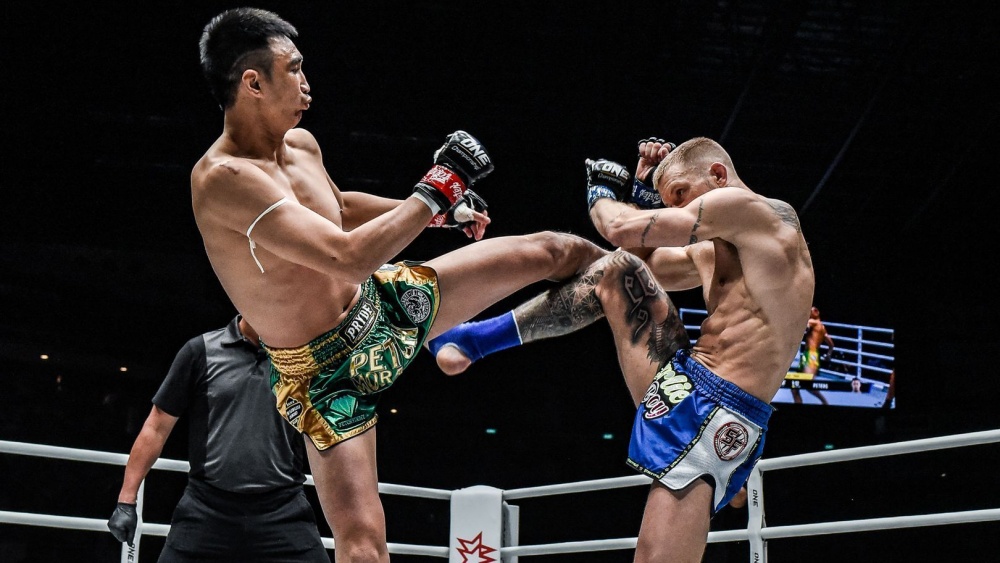
Covers are a simple to learn and effective way to block a punch at your head or body. The down side to covering up is that you are still taking on some damage, albeit to your arms instead of your body, but still, strikes to the body add up over time.
Generally speaking, they help deflect much of the power from more sensitive parts of your body, like your head or your kidney or liver, and are instead mostly absorbed by your arms. Here’s how to execute a cover:
- For a hook coming at your head, simply draw your hand and arm to your head to form a shield of protection around the side of your head about to get hit. Be sure to place your hand on your head, almost like a helmet, to avoid your hand getting hit and then ricocheting off your own head.
- For a jab or a cross coming at your head, draw both hands and arms up to form a tight shield around your head. Utilize some lateral movement to guide the strikes away from your face.
- For an uppercut coming at your head, repeat the same process for the jab and cross, but add needed angles to your covers (i.e. where your elbows and forearms will deflect the punch) to ensure that you can redirect the uppercuts as they come.
- For body hooks, draw your cover down a little bit towards your body to protect the side of your body. Lower yourself, if needed, by utilizing your legs rather than dipping your head forward and risking another strike to the head.
Covers are a simple defensive move that is often first taught to new Muay Thai athletes as its simplicity is generally quite easy to grasp and execute. Covers are great for last-minute defenses when you didn’t see a punch coming in time to get out of the way, and they are easy to follow up with your own strikes.
Plus, since your hands are generally kept up by your face anyway, drawing them in tighter to cover from a punch is only a small movement. Simply cover to defend against the strike and immediately throw a counter strike using your other hand.
7) Catching The Kick
Catching the kick is a more advanced way of dealing with a kick being thrown at the body, but it is an ideal way to stop the kick while possibly landing the sweep or returning strikes to your opponent.
If you start catching and countering, you’ll find your opponent less likely to continue throwing body kicks, too. Here’s how to execute one type of (among several) catch kicks:
- As the body kick is thrown, use your footwork to move into the strike. Doing so will take some of the power out of the strike as it won’t be fully executed.
- As you move towards the strike, utilize your body cover to block, while simultaneously using your opposite hand to under catch the kick, pinning it to your body and giving you a solid grasp on your opponent’s heel.
- Step your body back to clear your hips as you pull the kick through to the other side of your body. This gives you an excellent angle on your opponent, as you are now on the outside of their body while also having control of their foot in the air still.
- Elevate their leg as much as possible and utilize your free arm to create leverage against their shoulder or chest.
- Move your body in as you sweep out their other leg.
- If you miss the sweep or do not know how to sweep, you can always push your opponent as you drop the leg, and then drive back in with your own strikes, as well.
8) Leaning
The best defensive techniques are the ones that allow you to completely get out of the way and avoid taking on any damage at all. Leaning out of the way is an excellent option if you are able to see the strike coming with enough time to lean.
This takes practice and an understanding of timing, but once you get the hang of it, it is an easy defensive technique to execute while allowing you to easily move back in for counterstrikes. Here’s how to execute leaning out of the way from a head kick:
- As the kick is coming towards your head, maintain your stance.
- If you have time to step your rear leg back a little (half step), you will find extra space to lean and lower your body out of the way. If not, you can still execute this move well, but you may just cut it a little bit closer.
- Lean your body and head back out of the way of the oncoming head kick.
- Be sure to lean your body a bit more towards your rear leg to avoid tangling up your own feet and off-setting your own balance.
- As you bring your body back up to its natural position, be sure to come up into a counterstrike.
8) Get Out Of The Way
Some strikes, whether it be an elbow or a knee, require some excellent footwork, headwork, and the immediate action of getting out of the way. It sounds simple and obvious, of course, but like anything in Muay Thai, getting out of the way is absolutely a learned skill.
Getting out of the way is a culmination of a variety of defenses. It requires good footwork and head movement but can be combined with slips, covers, leaning, and more to accomplish the goal of simply not being in the spot where the strike will land.
Here’s how to use getting out of the way:
- Use your footwork to cut an angle around your opponent to make their strike miss its intended target zone.
- Use your head movement on various planes to move your head out of the way of strikes. Be sure to move your head on all three planes to best accomplish this (left/right, up/down, forward/backward).
- Combine other defensive techniques alongside strikes to offset your opponent’s strikes and avoid getting hit. An example would be to bob and weave while throwing a heavy strike to your opponent’s stomach, stopping their next strike in its tracks before hitting you.
9) Offense As Defense
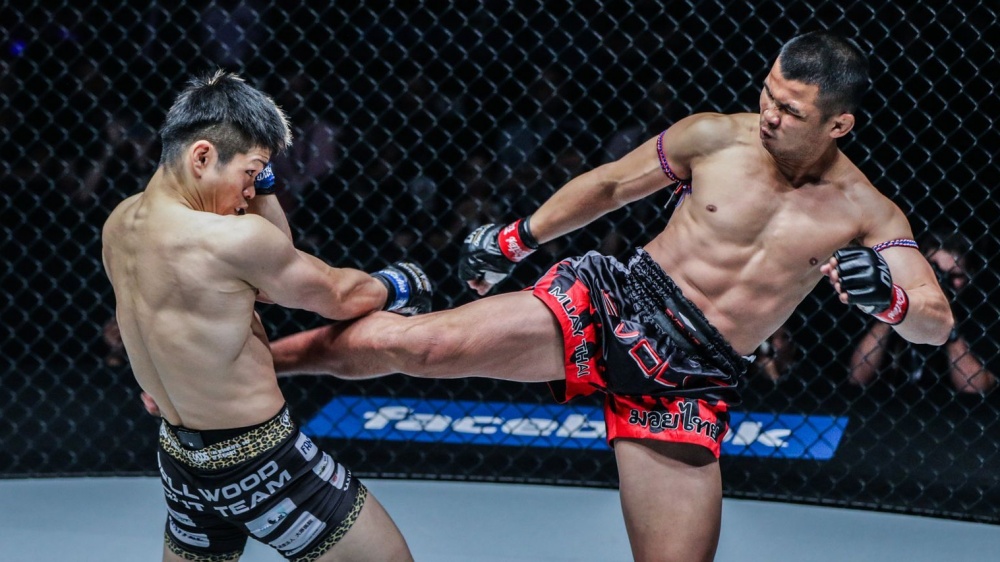
Sometimes, believe it or not, offense is the best defense. If you are the one throwing and dominating the striking, it can be incredibly difficult for your opponent to throw powerful or meaningful strikes back toward you. In this case, your offense becomes your defense. Here are some examples of how your offense can be executed as your defense, too:
- When you see your opponent turn their hip in preparation to throw a kick, throw a strike down the middle. Whether a teep, punch, or knee, the movement toward their stomach and hips will make their kick difficult to throw as their hips get set back a bit.
- If your opponent is basing out heavily on their lead foot to throw a lower punch towards you, throwing an inside leg kick to their heavy leg will displace their weight, sometimes causing them to get swept, and it will certainly stop them from coming in that same way again.
If you can use offense as defense, you will quickly find yourself ahead of the game and dominating in the ring. Offense is truly the best defense.
10) Long Guard
The long guard, while also possibly fitting into a “fighting style” category, falls under the list of defensive techniques to master too. This defensive technique is marked by an outstretched lead arm and is excellent for:
- Keeping your opponent at a further range.
- Distracting your opponent with your hand floating in their face and distracting their line of sight.
- Making them work around your hands in order to strike.
It is helpful to utilize this defensive technique if you are finding it difficult to keep an opponent at a good distance. It’s an excellent technique for distracting your opponent’s line of sight, making it easier to protect yourself and return counterstrikes, too.
Master These 10 Essential Muay Thai Defensive Techniques
These 10 defensive techniques are all considered “essential” for Muay Thai. While some require more time training to truly master, they are all techniques that should be worked on, drilled, and practiced from the beginning of your Muay Thai training.
The better you get at each of these techniques, the better your overall defense will become. When you are able to utilize multiple techniques back to back, you will be able to best match your defense to your opponent’s offensive style, giving you the highest chance of dominating the match.
Improve Your Muay Thai Game
If you are looking to really up your Muay Thai and your defensive game, be sure to attend one of Evolve’s complimentary introductory Muay Thai classes to learn from world-class coaches.
Book your complimentary trial class with our World Champions below!
If you have any other questions regarding Evolve MMA and the programs we offer, you can get in touch with our membership executives at the following locations:
Evolve MMA (Far East Square)
26 China Street
Far East Square #01-01
Singapore 049568
Phone: (65) 6536 4525
Evolve MMA (Orchard Central)
181 Orchard Road
#06-01 Orchard Central
Singapore 238896
Phone: (65) 6536 4556
Evolve MMA (KINEX)
11 Tanjong Katong Road
#02-52 KINEX
Singapore 437157
Phone: (65) 6288 2293
Evolve MMA (Clarke Quay Central)
6 Eu Tong Sen Street
#04-18 Clarke Quay Central
Singapore 059817
Phone: (65) 6226 2150
